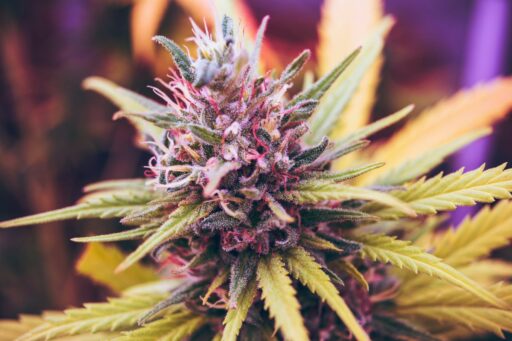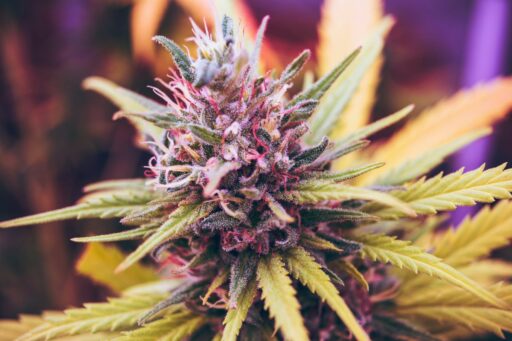As the debate around marijuana legalization continues to evolve, a growing number of states across the United States have embraced the legalization of recreational marijuana. This article delves into the journey of legalization, from the pioneering states that first broke ground to the most recent additions to the green wave. We’ll explore the economic and social impacts, navigate the legal intricacies, and even take a glance at the global perspective on cannabis policies.
Key Takeaways
- Twenty-four states, along with Washington D.C., Guam, and Northern Mariana Islands, have legalized recreational marijuana, with recent additions including Delaware, Maryland, Minnesota, Missouri, Ohio, and Rhode Island.
- Colorado and Washington were the first states to legalize recreational marijuana in 2012, with a trend of legalization via ballot initiatives and legislative actions following in numerous states.
- The economic benefits of legalization are significant, with states garnering substantial tax revenues from marijuana sales and witnessing job creation and market growth.
- Legal complexities remain due to discrepancies between state laws and federal prohibition, affecting everything from interstate commerce to the legal standing of residents and tourists.
- Internationally, the United States’ approach to marijuana legalization is part of a broader trend, with various countries reevaluating their cannabis policies amid shifting public perceptions.
The Trailblazers of Legalization

The First States to Legalize Recreational Marijuana
The journey towards the widespread legalization of recreational marijuana in the United States began with Colorado and Washington making history in 2012. These states opened the doors for a national shift in cannabis policy by approving adult-use recreational marijuana through ballot initiatives. Alaska, Oregon, and the District of Columbia followed in 2014, setting a precedent for others to join the movement.
Since these pioneering steps, numerous states have embraced legalization, each with its own set of rules and regulations. For instance, Vermont made headlines in 2018 as the first state to legalize marijuana through legislative action rather than a public vote. This approach highlighted the growing acceptance of cannabis within state governments and the varied paths states can take towards legalization.
The progression of legalization has not been uniform across the country, with some states adopting more conservative limits on possession and home cultivation. The table below provides a snapshot of the initial states that legalized recreational marijuana and their respective limits on possession:
| State | Year Legalized | Possession Limit |
|---|---|---|
| Colorado | 2012 | 1 ounce |
| Washington | 2012 | 1 ounce |
| Alaska | 2014 | 1 ounce |
| Oregon | 2014 | 1 ounce |
| District of Columbia | 2014 | 2 ounces |
The evolution of cannabis legalization reflects a broader cultural shift, with states increasingly recognizing the potential benefits of regulated marijuana markets.
Subsequent States Joining the Movement
Following the pioneering states, a wave of legalization has swept across the country. Recreational marijuana is currently legal in 24 states and Washington, D.C. This expansion includes a diverse array of states, each with their own unique regulatory frameworks and approaches to cannabis legalization.
The National Conference of State Legislatures (NCSL) has been proactive in supporting state sovereignty regarding marijuana policy. In 2018, they advocated for a bill to protect states’ rights to regulate marijuana, emphasizing the importance of state authority in this area.
As the movement grows, the conversation shifts towards federal legalization and the complexities it entails. Advocates face a challenging landscape, but the momentum for change is undeniable. The list of states embracing legalization continues to grow, with Ohio being the most recent addition at the end of 2023.
Legislative vs. Ballot Initiative Approaches
In the realm of marijuana legalization, two primary pathways have emerged: legislative action and ballot initiatives. Legislative approaches involve elected officials passing laws to legalize recreational marijuana, often after considerable debate and compromise. On the other hand, ballot initiatives allow citizens to bypass the legislature and place legalization directly to a vote, reflecting the will of the people.
- Legislative action can be a lengthy process, subject to political maneuvering and the influence of various interest groups.
- Ballot initiatives empower voters but can face challenges, especially in conservative states where opposition to marijuana reform is stronger.
The ballot initiative process has become a crucial tool for marijuana advocacy, particularly in states where legislators are reluctant to address the issue. However, this approach can be met with resistance from those who fear the societal impacts of legalization.
In 2022, several states witnessed ballot initiatives related to marijuana legalization. Here’s a snapshot of the outcomes:
| State | Initiative Result |
|---|---|
| Colorado | Psychedelics Decriminalization Passed |
| Arkansas | Marijuana Legalization Rejected |
| Maryland | Marijuana Legalization Passed |
| Missouri | Marijuana Legalization Passed |
| North Dakota | Marijuana Legalization Rejected |
| South Dakota | Marijuana Legalization Rejected |
These results highlight the varied responses across the nation, with some states embracing change and others holding firm to prohibitionist stances.
Current Landscape of Recreational Marijuana Legalization

States with Legal Recreational Marijuana Use
As of recent years, the landscape of recreational marijuana legalization has seen significant expansion across the United States. Twenty-four states, along with Washington, D.C., Guam, and the Northern Mariana Islands, have legalized recreational marijuana use. This marks a considerable shift in policy from just a decade ago, when such legalization was limited to a handful of states.
Most recently, states like Delaware, Maryland, Minnesota, Missouri, Ohio, and Rhode Island have joined the movement, allowing individuals 21 or older to possess and, in some cases, cultivate cannabis at home. The specifics, such as the permissible amount of cannabis and the number of plants allowed for home cultivation, vary by state, reflecting the nuanced approaches to legalization.
The evolution of marijuana legalization not only reflects changing public attitudes but also a growing recognition of the potential economic benefits that come with regulated cannabis markets.
The trailblazing states of Colorado and Washington set the precedent in 2012, with others quickly following. The progression from medical to recreational legalization has often been achieved through ballot initiatives, though some states, like Vermont and Illinois, have taken the legislative route.
Recent Additions to the Legalization List
As the wave of marijuana legalization continues to sweep across the United States, several jurisdictions have recently joined the ranks of those permitting recreational use. The U.S. Virgin Islands, Guam, and the Northern Mariana Islands have expanded their cannabis policies to include both medical and recreational use, aligning with a growing number of states.
The timeline of legalization is complex, with many states transitioning from medical legalization to full recreational use. This progression often reflects a broader shift in public attitudes and legislative priorities. The following table presents the most recent states to legalize recreational marijuana, along with their effective dates:
| State/Territory | Effective Date |
|---|---|
| State A | Date A |
| State B | Date B |
| State C | Date C |
The momentum for legalization shows no signs of slowing down, as societal views evolve and the economic benefits become increasingly evident. This trend is not only reshaping the legal landscape but also influencing policy discussions on a national level.
Understanding Home-Grow Regulations
As states navigate the complexities of legalizing recreational marijuana, home-grow regulations have emerged as a critical aspect of the conversation. The vast majority of states that have legalized adult use permit residents to cultivate a limited number of plants for personal use. This number varies significantly across states, from as few as two plants in Montana to up to 12 in Michigan.
The ability to grow marijuana at home is seen as a way to empower consumers and undercut the illicit market. However, it also presents challenges for law enforcement and public safety.
Here’s a quick overview of the home-grow limits in a selection of states:
- Montana: Up to 2 plants
- Michigan: Up to 12 plants
- An Act to Control and Regulate Adult Use Cannabis: 6 plants per individual, 12 plants per residence
Regulators have suggested strategies to mitigate the potential negative effects of home cultivation, such as providing clear directions to law enforcement and incorporating residency limits to control the number of plants grown in a single residence.
Economic and Social Impacts of Legalization

State Tax Revenues from Marijuana Sales
The legalization of recreational marijuana has introduced a new source of revenue for states through taxation. States have implemented various tax structures, ranging from excise taxes to standard sales taxes, to capitalize on this emerging market. However, the actual tax revenues have often diverged from initial projections.
In the case of Ohio, for example, the state imposes a 10% excise tax on adult-use cannabis, in addition to the regular state and local sales taxes, which can total between 15.25% and 17.5%. This layered tax structure is designed to funnel funds into the state’s general fund, without designated expenditure areas.
While advocates for cannabis reform highlight the potential for significant tax revenue, the reality is that these figures are relatively modest in the context of the state’s overall budget. Predictions are challenging, and actual revenues can be influenced by a multitude of factors, including market dynamics and regulatory changes.
Here’s a snapshot of the tax revenue expectations for Ohio:
| Year of Operation | Estimated Tax Revenue Range |
|---|---|
| Year 5 | $276 million – $403 million |
Despite the optimistic forecasts, marijuana tax revenues fall short of projections in many states, prompting questions about the efficacy of the tax structures and the accuracy of revenue estimations.
Job Creation and Market Growth
The legalization of recreational marijuana has catalyzed significant job creation across states that have embraced the policy. The burgeoning industry not only generates jobs directly related to cannabis cultivation and sales but also stimulates ancillary markets such as security, legal services, and marketing.
According to recent reports, the legal marijuana industry now supports more than 440,000 full-time jobs, reflecting a steady increase in employment opportunities. This growth is not just in numbers; it represents a diverse range of positions from entry-level to executive, highlighting the industry’s capacity to bolster the job market across various skill levels.
The economic ripple effect of this expansion is substantial, with states witnessing a surge in tax revenues and local economies benefiting from the increased business activity. While the industry’s future is promising, it remains a cash-intensive sector, with potential legislative changes on the horizon that could further shape its trajectory.
Shifts in Public Perception and Crime Rates
The debate on whether the legalization of recreational marijuana leads to an increase or decrease in crime rates remains a contentious issue. Studies have shown a complex relationship between marijuana policy liberalization and public safety, with some research indicating no significant threat to safety post-legalization. The public perception of cannabis has evolved, with many viewing it as less harmful, contributing to a shift in attitudes and potentially influencing crime rates.
The nuances of the relationship between cannabis legalization and crime rates are multifaceted, reflecting the intricate interplay of societal, legal, and economic factors.
While some studies suggest that legalization may lead to a rise in certain types of offenses, others have found no substantial impact or even a decrease in crime. It is crucial to consider the limitations of data and the myriad of confounding factors when interpreting these findings.
Navigating the Legal Complexities

Interstate Legal Discrepancies
The legalization of recreational marijuana across various states has led to a complex web of regulations that often conflict with federal law. Discrepancies persist even in states where cannabis has been legalized, creating a challenging landscape for law enforcement, businesses, and consumers alike. For instance, while a state like Ohio has legalized cannabis, understanding the law’s parameters remains crucial, especially for law enforcement training and the criteria for DUI enforcement.
Federal rescheduling of marijuana may not immediately lead to interstate commerce, but the softening federal stance and increasing state legalizations could result in more legal products being illicitly transported across state lines. This is particularly true for products from states like California and Colorado.
The patchwork of state-level regulations, including financial and banking challenges, is further complicated by federal restrictions like Revenue Code Section 280E. Interstate commerce and money transfer issues arise from the conflict between state-level legalization and federal prohibition.
States contemplating automated record clearance for marijuana offenses must navigate not only their own laws but also consider how federal policy changes, such as immigration reforms, could impact their decisions. The timing and method of implementing such changes are critical to avoid potential biases and ensure fairness in the application of the law.
Federal vs. State Law Conflicts
The dichotomy between federal and state marijuana laws creates a complex legal landscape for businesses, individuals, and law enforcement. Federal law classifies marijuana as an illegal substance, yet many states have legalized its use for recreational purposes. This contradiction leads to a myriad of issues, particularly for marijuana businesses that face challenges in accessing banking services due to federal regulations like Revenue Code Section 280E.
In states where recreational marijuana is legal, law enforcement must navigate the murky waters of the Fourth Amendment. The legalization has prompted a reevaluation of what police can and cannot do when encountering marijuana. In some jurisdictions, the answer is increasingly becoming ‘nothing at all.’
The conflict between federal prohibition and state legalization also extends to the workplace. Employers in legal states struggle with drug testing policies that respect both their business interests and the personal freedoms of employees.
Legislative efforts are underway to reconcile these differences. States such as Michigan and California have urged Congress to clarify federal positions and allow financial institutions to service the cannabis industry. However, the patchwork of state-specific laws continues to pose challenges, with some municipalities enacting regulations that differ from state laws, potentially leading to inconsistent enforcement and legal outcomes.
Legal Implications for Residents and Tourists
The legalization of recreational marijuana in various states has introduced a complex web of legal implications, particularly for non-citizen residents and tourists. While state laws may permit the use of cannabis, federal law continues to classify it as an illegal substance, creating a precarious situation for those not protected by citizenship.
- Non-citizens, including undocumented individuals and asylum seekers, face severe risks under federal immigration policy for any cannabis-related offenses, even minor ones.
- States with legalized cannabis have differing approaches to licensing, with some requiring in-state residency, affecting economic opportunities for non-residents.
- Tourists must navigate varying local laws and the absence of federal legality, which can lead to confusion and legal issues.
It is crucial for states with legalized cannabis to educate non-citizens about the federal consequences of cannabis possession and to consider vacating pre-legalization convictions to mitigate adverse effects.
The intricate interplay between state and federal laws necessitates a careful consideration of residency status and the potential for unintended legal consequences, especially in light of the National Conference of State Legislatures‘ overview of the national landscape.
The Global Perspective on Marijuana Legalization

Comparing US and European Marijuana Policies
As the global landscape for marijuana legalization evolves, a clear trend emerges: Americans largely favor legalization of the drug, including for both medical and recreational use. This sentiment is echoed in the increasing number of states adopting such policies. In Europe, the approach to legalization is more varied, with some countries decriminalizing possession and others allowing recreational use in specific circumstances.
In the United States, the movement toward legalization has been largely driven by individual states through legislative action or ballot initiatives. Europe, on the other hand, has seen a mix of national and local level reforms, often influenced by shifting public perceptions and economic considerations.
For those interested in the specifics, a detailed comparison of US and European marijuana policies reveals the nuances of each region’s approach to cannabis legislation. It’s important to recognize the diversity of legal frameworks and the implications they carry for residents and tourists alike.
International Trends in Cannabis Legalization
The Global Cannabis Outlook for 2024 indicates a significant surge in the worldwide cannabis market, with projections estimating nearly $61 billion in revenue. This upward trajectory is expected to continue, with forecasts suggesting a potential market size of $103 billion by 2028. The trend is not just about economics; it reflects a broader shift in international attitudes towards cannabis.
In various regions, the push for legalization is influenced by a mix of societal, health, and economic factors. As countries observe the outcomes of legalization in early adopter states and nations, they are increasingly considering similar paths. This global movement is not uniform, however, with each country grappling with its own legal frameworks and cultural contexts.
The evolving landscape of cannabis legalization worldwide is a complex tapestry of policy reform, economic opportunity, and shifting societal norms. It’s a phenomenon that’s reshaping conversations around drug policy and public health on a global scale.
The Role of International Law and Treaties
International law and treaties play a pivotal role in shaping the policies of nations regarding the legalization of marijuana. The complexity of international drug control treaties often poses challenges to countries seeking to reform their cannabis laws. These treaties, primarily those under the auspices of the United Nations, set forth agreements on the control and prohibition of certain substances, including cannabis.
Countries aiming to legalize marijuana must navigate these international agreements while also considering their domestic legal frameworks. Some have chosen to interpret the treaties more flexibly, while others advocate for amendments to reflect the changing global perspective on cannabis.
The interplay between international law and national legalization efforts underscores the need for a collaborative approach to drug policy reform. This would involve reassessing treaty provisions in light of contemporary views and scientific understanding of cannabis.
While no consensus has been reached on an international level, the ongoing dialogue suggests a gradual shift towards more nuanced and potentially permissive policies in the future.
Conclusion
As we navigate the ever-changing terrain of marijuana legislation, it’s clear that a significant number of states, territories, and the District of Columbia have embraced the legalization of recreational marijuana. This movement reflects a broader shift in societal attitudes and an acknowledgment of the potential economic benefits. With the most recent additions of Delaware, Maryland, Minnesota, Missouri, Ohio, and Rhode Island, the United States continues to see a growing trend towards legalization. However, the specifics of legalization, including home-growing regulations and taxation, vary widely across jurisdictions. It is crucial for individuals to stay informed through official channels to ensure compliance with current laws. As the map of legal marijuana expands, it will be interesting to observe how this evolution influences not only state policies but also federal legislation in the years to come.
Frequently Asked Questions
Which were the first states to legalize recreational marijuana?
Colorado and Washington were the first states to legalize recreational marijuana in 2012.
How many states currently allow recreational marijuana use?
As of the latest information, 24 states, along with Washington, D.C., Guam, and Northern Mariana Islands, permit recreational marijuana use.
Can individuals grow their own marijuana in states where it’s legalized?
Yes, most states that have legalized recreational marijuana also allow individuals to grow a limited number of plants for personal use, but the specific regulations and plant limits vary by state.
Are there any recent additions to the list of states that have legalized recreational marijuana?
The most recent states to legalize recreational marijuana include Delaware, Maryland, Minnesota, Missouri, Ohio, and Rhode Island.
How does the legalization of marijuana impact state tax revenues?
States with legalized marijuana have seen significant increases in tax revenues from the sale of cannabis, which can be used to fund various state programs and initiatives.
Is recreational marijuana legal at the federal level in the United States?
No, recreational marijuana remains illegal at the federal level in the United States, creating conflicts between federal and state laws where marijuana has been legalized at the state level.





